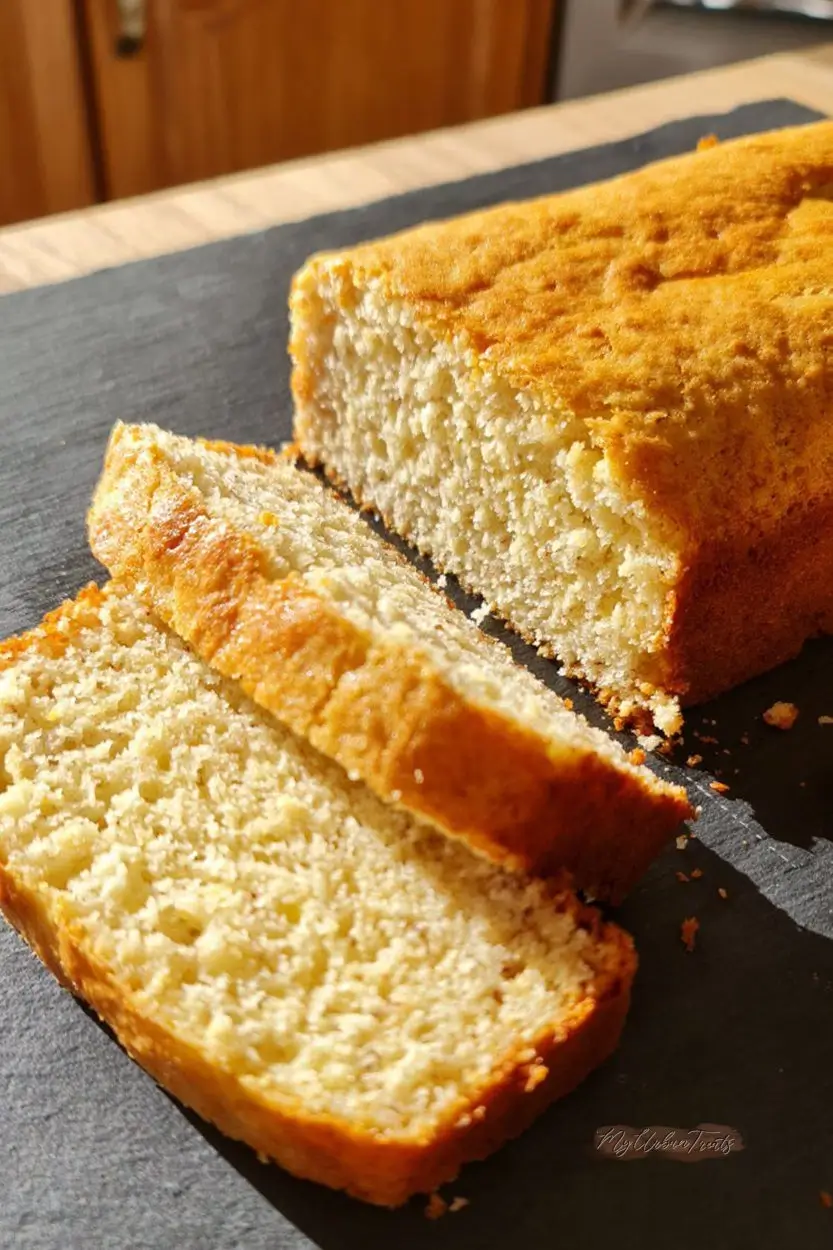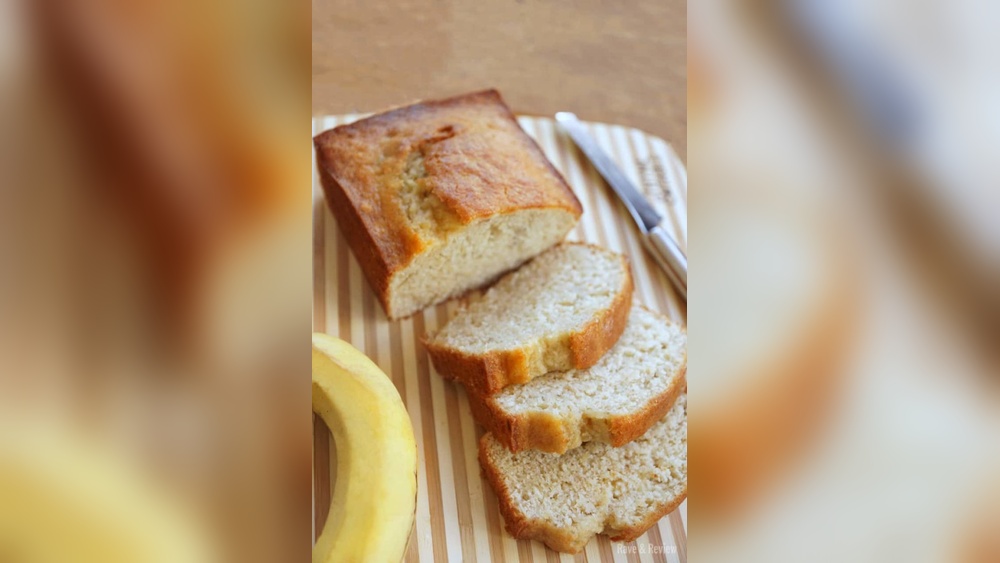Are you craving a delicious slice of homemade banana bread but realize you’re out of all-purpose flour? What if you have self-rising flour sitting in your pantry?
You might be wondering: can you make banana bread with self-rising flour? The answer could save you a trip to the store and get your baking started right away. Keep reading to discover how self-rising flour affects your banana bread, what tweaks you might need, and how to bake a moist, tasty loaf every time.
Your next perfect banana bread could be just a few simple steps away!

Credit: sugarylogic.com
Banana Bread Basics
Banana bread is a simple, sweet treat loved by many. It uses ripe bananas to add flavor and moisture. The bread is soft, easy to make, and perfect for breakfast or snacks.
The key to good banana bread lies in the ingredients and how they work together. Each part plays a role in taste, texture, and rise.
Key Ingredients
Bananas provide natural sweetness and moisture. Flour gives structure to the bread. Sugar adds extra sweetness. Eggs bind ingredients and help with texture. Butter or oil adds richness. Baking soda or baking powder helps the bread rise.
Role Of Flour In Texture
Flour is the main dry ingredient in banana bread. It forms gluten, which gives the bread its shape and chew. Using different types of flour changes the texture. All-purpose flour makes a soft, tender crumb. Self-rising flour already contains baking powder and salt. It can make the bread rise more but might change the taste and texture slightly.

Credit: myurbantreats.com
What Is Self-rising Flour?
Self-rising flour is a special type of flour often used in baking. It already contains baking powder and salt. This means it helps baked goods rise without extra ingredients. Many bakers use it for quick recipes like biscuits and pancakes. Understanding self-rising flour helps decide if it suits your banana bread recipe.
Composition And Uses
Self-rising flour is made by mixing three key ingredients. These are all-purpose flour, baking powder, and salt. The baking powder acts as a leavening agent. It helps dough or batter expand during baking. Salt adds flavor and balances the mix. This flour suits recipes needing quick rise. Common uses include biscuits, muffins, and some cakes.
Differences From All-purpose Flour
All-purpose flour does not contain baking powder or salt. It is plain flour used for many cooking and baking needs. Recipes with all-purpose flour require you to add leavening agents separately. Using self-rising flour means skipping this step. This can change the texture and rise of your baked goods. For banana bread, the choice affects moisture and crumb. Knowing the difference guides you to better results in baking.
Using Self-rising Flour In Banana Bread
Using self-rising flour in banana bread changes the way the bread bakes. This flour already contains baking powder and salt. It can make the baking process faster and simpler. But it also needs some recipe changes to get the best results.
Adjusting The Recipe
When using self-rising flour, skip adding extra baking powder or baking soda. These ingredients are already in the flour. Also, reduce the salt amount in your recipe. This prevents the bread from tasting too salty. Use the same amount of self-rising flour as the original flour called for.
Impact On Rise And Texture
Self-rising flour helps banana bread rise more easily. The bread becomes lighter and fluffier. It may rise faster in the oven. The texture might feel softer and less dense than usual. Watch the bread closely while baking to avoid overbaking.
Tips For Best Results
Making banana bread with self-rising flour can be simple and tasty. To get the best results, you need to adjust some common steps. Small changes make a big difference in texture and taste.
These tips help you balance ingredients and handle the batter right. Follow these ideas to bake soft and moist banana bread every time.
Balancing Leavening Agents
Self-rising flour already has baking powder and salt. Adding more baking powder or baking soda can make the bread rise too fast. This causes a strange texture or taste.
Use less or no extra leavening agents. Check your recipe and reduce baking powder or soda by half. This keeps the bread light without over-rising.
Moisture And Mixing Techniques
Banana bread needs moisture from ripe bananas and other liquids. Self-rising flour can absorb more liquid than regular flour.
Add slightly more milk, yogurt, or oil to keep the bread moist. Mix ingredients gently to avoid tough bread. Overmixing creates a dense texture.
Stop mixing when you see no dry flour. This helps keep the bread soft and tender after baking.
Common Mistakes To Avoid
Making banana bread with self-rising flour can be simple. Yet, some common mistakes can spoil the texture and taste. Avoiding these errors helps you bake a better loaf every time. The next sections explain key mistakes to watch for.
Overmixing The Batter
Mixing too much makes the bread tough. It breaks gluten in the flour, causing a dense texture. Stir gently until ingredients just combine. A few lumps are okay. This keeps the bread soft and moist.
Ignoring Flour Measurements
Using too much or too little flour changes the bread’s texture. Self-rising flour already has baking powder and salt. Measure it carefully with a spoon and level it off. Too much flour makes the bread dry. Too little makes it too wet and heavy.

Credit: rbandmindy.com
Recipe Variations With Self-rising Flour
Self-rising flour can change your banana bread in fun ways. It makes the bread soft and fluffy. You can try many recipe variations using this flour. Small changes bring new flavors and textures. These ideas are simple and quick to try at home.
Adding Nuts Or Chocolate Chips
Nuts add a nice crunch to banana bread. Walnuts or pecans work well with the sweet taste. Chocolate chips give a rich, sweet surprise in each bite. Mix them gently into the batter. Use about half a cup to keep balance. These mix-ins make the bread more exciting and tasty.
Gluten-free Alternatives
Gluten-free baking can be easy with self-rising flour substitutes. Look for gluten-free self-rising flour blends in stores. These blends usually have rice flour or tapioca starch. Use the same amount as regular flour. The bread stays soft and moist without gluten. This option suits people with gluten intolerance or allergy.
Frequently Asked Questions
Can I Use Self-rising Flour For Banana Bread?
Yes, you can use self-rising flour for banana bread. It already contains baking powder and salt, so omit these from your recipe.
How Does Self-rising Flour Affect Banana Bread Texture?
Self-rising flour makes banana bread lighter and fluffier due to its leavening agents. It helps the bread rise evenly.
Should I Adjust Ingredients When Using Self-rising Flour?
Yes, reduce or skip baking powder and salt when using self-rising flour to avoid over-leavening and a salty taste.
Is Banana Bread With Self-rising Flour Healthier?
Using self-rising flour doesn’t significantly change banana bread’s health profile. It mainly affects texture and rise, not nutrition.
Conclusion
Banana bread with self-rising flour can turn out soft and tasty. The flour adds some lift without extra baking powder. You might need to adjust sugar or baking time a little. It’s a quick way to use what you have at home.
Experiment and see what texture you like best. Baking is fun and forgiving. Enjoy your homemade banana bread with simple ingredients and little fuss.

